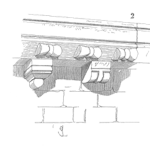
Redundancy Risk Balance
Abstract
Greg and Fred discuss what is redundancy and why it’s a critical business tool. ᐅ Play Episode
Your Reliability Engineering Professional Development Site
by Greg Hutchins Leave a Comment

Greg and Fred discuss what is redundancy and why it’s a critical business tool. ᐅ Play Episode
by George Williams Leave a Comment

by Greg Hutchins Leave a Comment

Greg and Fred discuss risk and reliability lenses for solving today’s dynamic problems.
ᐅ Play Episode
by Michael Pfeifer, Ph.D., P.E. Leave a Comment

See this blog post on residual stress to learn more about residual stress
See this blog post on the five concepts to learn more.
by Greg Hutchins Leave a Comment

Risk-based auditing (RBA) is all about risk management. Risk-based auditing is simply risk transfer from the auditee to the auditor.
In today’s uncertain world, the lens for most, if not all, problem-solving and decision-making is risk. Risk-based auditing is a must-have tool for all quality and reliability professionals. ALL ISO management systems require RBA, whether 1st, 2nd, or 3rd party audits. [Read more…]

Looking at the role of waste as it affects profit, other ways to reduce cost and some of the consequences are discussed.
I reference plastic injection molding in the discussion. In case you are not familiar with the process, here’s a link to a good overview video on YouTube: engineerguy Plastic Injection Molding
All episodes and episode notes are at Way of the Quality Warrior website
You can also contact the host Keith Fong there or on LinkedIn Keith Fong on LinkedIn
by Christopher Jackson Leave a Comment

Chris and Fred discuss some of the things we have learned in the world of reliability directly due to World War II. Not many people know that around one third of today’s medical vaccines were developed out of necessity from World War II … and something similar happened when it came to making things reliable.
ᐅ Play Episode
by Christopher Jackson Leave a Comment

Chris and Fred discuss what it means to ‘assume’ something. We assume things all the time in our daily lives. We would never get anything done if we didn’t rely on quick ‘guesses’ about the world around us. But then there are those ‘assumptions’ that get us in trouble. So what’s the difference?
ᐅ Play Episode
by Mike Konrad Leave a Comment

On this episode, I have no guests as this is the final episode of the Reliability Matters Podcast for the 2023 season. Instead, let’s review what happened on the podcast this year.
A special thanks to my guests and listeners/viewers for making this podcast so successful.
by Greg Hutchins Leave a Comment

Greg and Fred discuss conformity assessment and what should and can you do to comply with a regulatory requirement.
ᐅ Play Episode
by Greg Hutchins Leave a Comment

Greg and Fred discuss how to improve your ability to get the right information to solve the right problems.
ᐅ Play Episode
by Michael Pfeifer, Ph.D., P.E. Leave a Comment

See this blog post on the five concepts to learn more.

by Christopher Jackson Leave a Comment

Chris and Fred discuss when you should do this thing called Monte Carlo simulation? … in fact … what is it?
ᐅ Play Episode
by Christopher Jackson 2 Comments

Chris and Fred discuss how we can go about estimating reliability … especially when you don’t have a lot of data, experience or other things that textbooks say you need to have to estimate reliability?
ᐅ Play Episode
 Ask a question or send along a comment.
Please login to view and use the contact form.
Ask a question or send along a comment.
Please login to view and use the contact form.